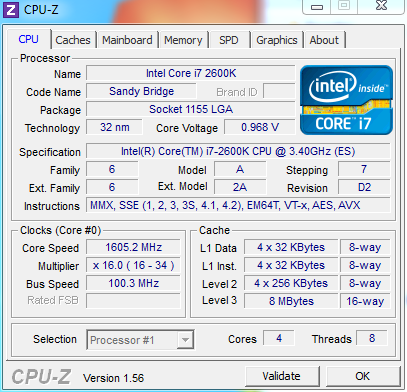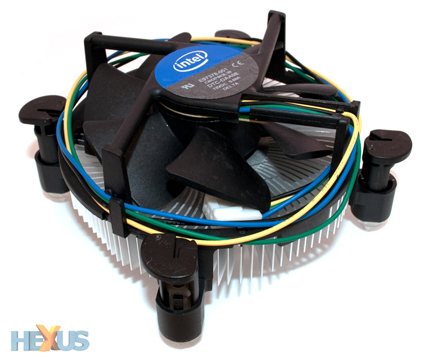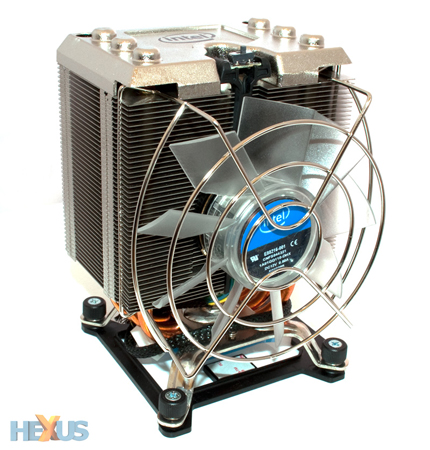Special 'K'
Here's a CPU-Z shot of the Core i7 2600K idling at 1,600MHz. You'll note that it has a 3.4GHz basic speed that ramps up to 3.8GHz when a single thread is running. The math-intensive AVX instruction-set is noted and the 8MB of Last Level Cache is also displayed.
The first departure from the Intel norm is the bus speed. Core 2010 models all run with a 133MHz base clock, but this drops to 100MHz on all Sandy Bridge processors, leading to a default 34x multiplier here. So why such a low bus speed, you may ask?
Thinking of the CPU and GPU as one entity - they are constructed from the same 32nm silicon after all - and the tight coupling of all the chips' features, the bus speed is the general clock of the processor. Increasing this clock from 100MHz causes all kinds of problems for the PCIe lanes and various 'System Agent' functions.
Run the bus speed much past 105MHz and the processor will simply crash and lock-up. There's no method that we're aware of that could be used by a motherboard manufacturer to ramp up the bus speed to, say, 130MHz and have the chip stable. This is precisely why Intel is launching multiplier-unlocked 'K' chips, so that the enthusiast can increase the multiplier, for a higher core speed, while keeping the system humming along nicely.
The bottom line here is that you need to have a 'K' chip - either 2500K or 2600K - if pumping up the chip's frequency gets you all excited. The good news is that Intel isn't charging a huge premium for them - some $11 and $21 for the 2500K and 2600K, respectively - over their locked, non-K counterparts. What's more, you receive better HD Graphics to boot.
Finally, a look at the 2600K


The small heatsink accompanying the Core i5 2500K
And the Core i7 980X-esque cooler for the 2600K.
Pre-benchmark summary
OK, we've made you read a lot of words and given you just four pictures, so here is what you need to know in a nutshell: Intel's second-generation Core chips (Sandy Bridge) use a new core design to amalgamate the CPU and GPU on to one bit of silicon. High clock speeds should guarantee decent performance, while the graphics portion is the best yet from Intel.
The architecture is such that overclocking can only really be achieved by purchasing 'K' chips, though they're well-priced at under $300. However, the change in the core means that a new socket and motherboard, LGA1155 and 6-series, are needed to run the new processors. You receive a lot, sure, but need to shell out for a new motherboard alongside the chip.
Improving upon mid-range Lynnfield in practically every way, let's now see how they perform.












